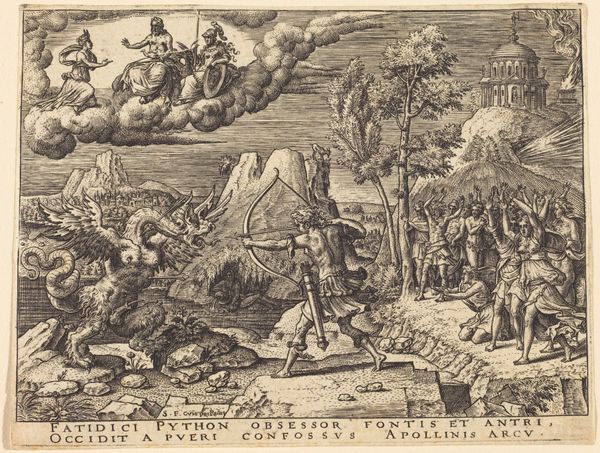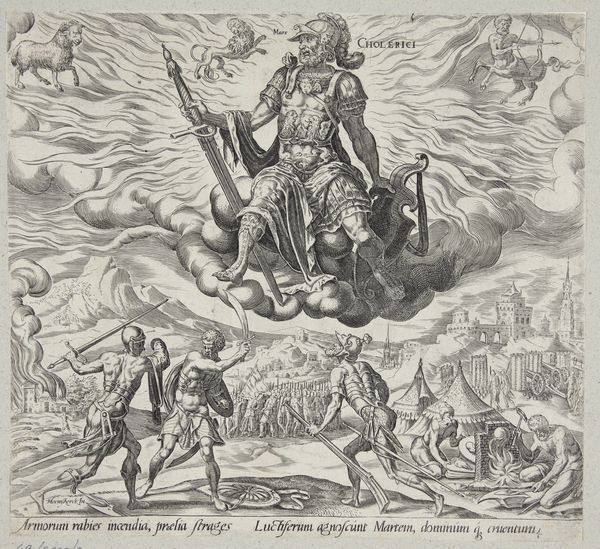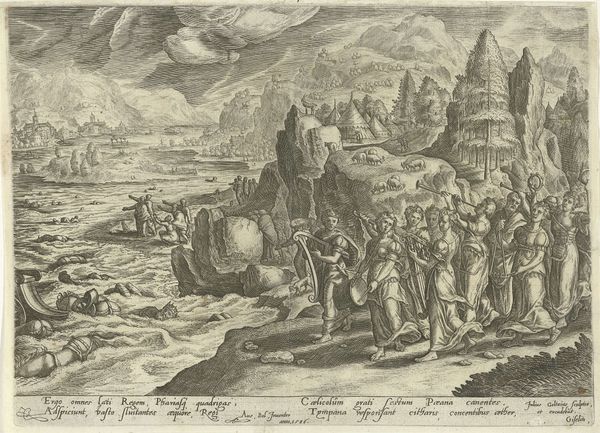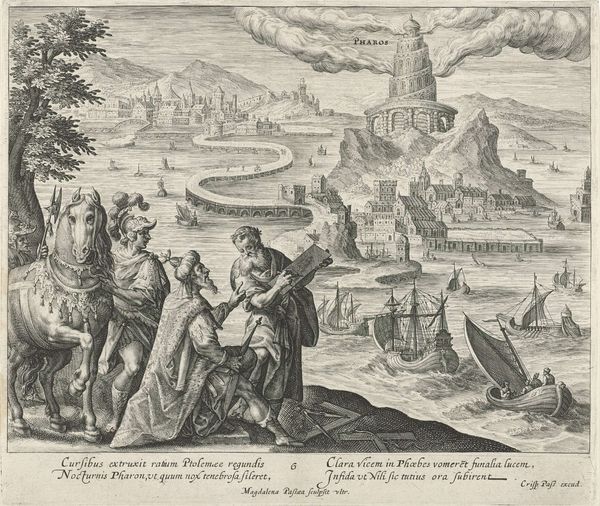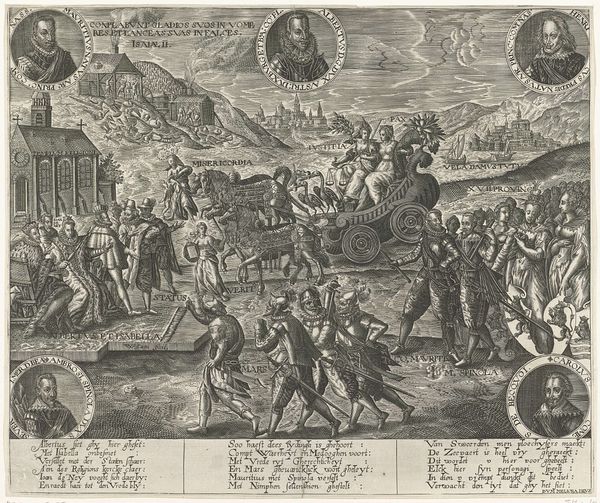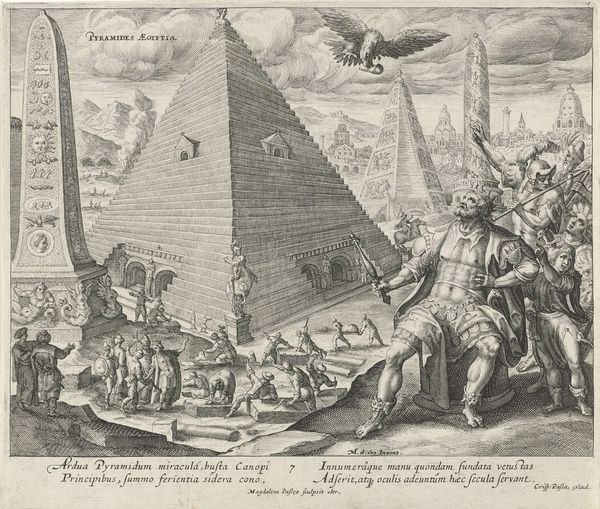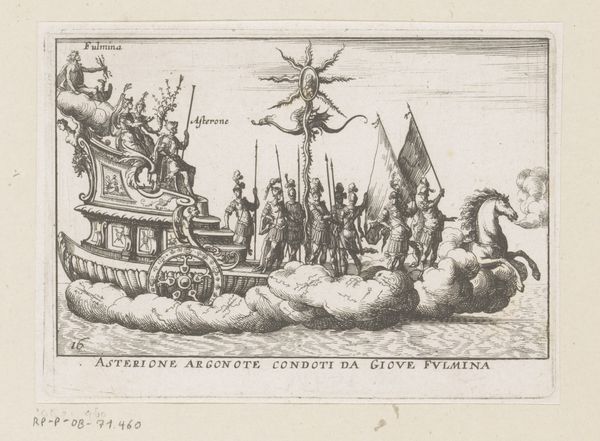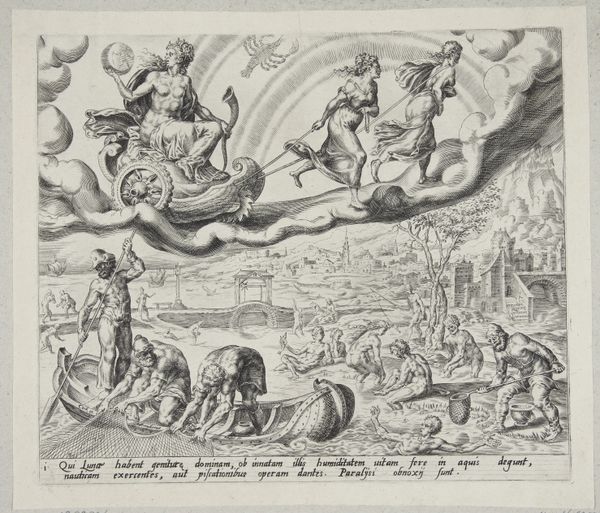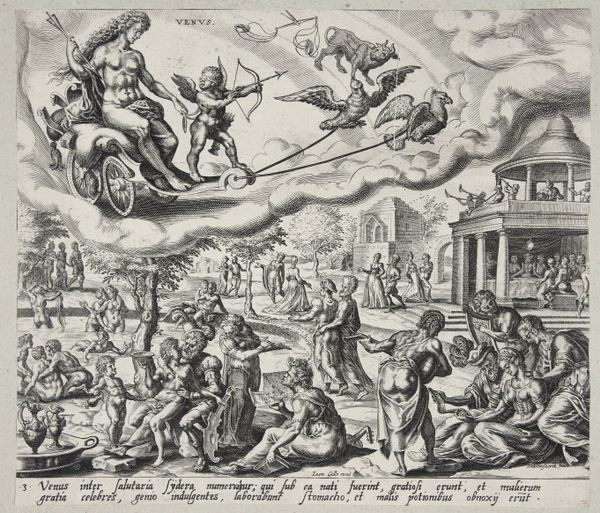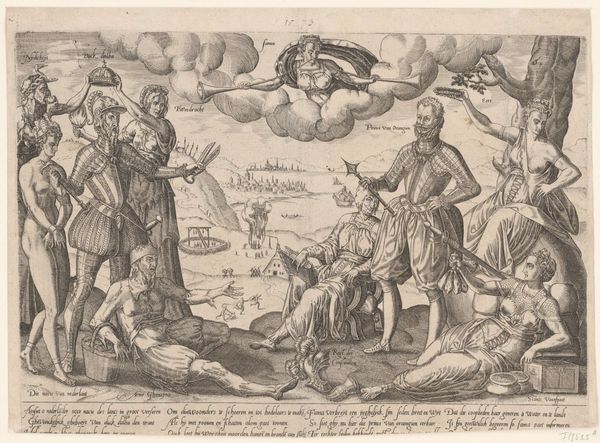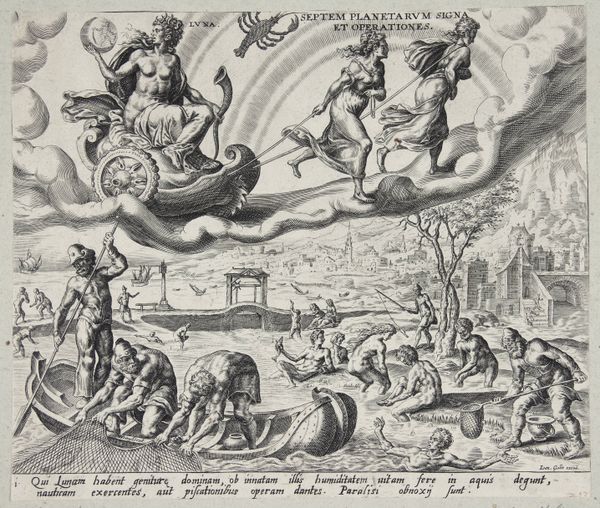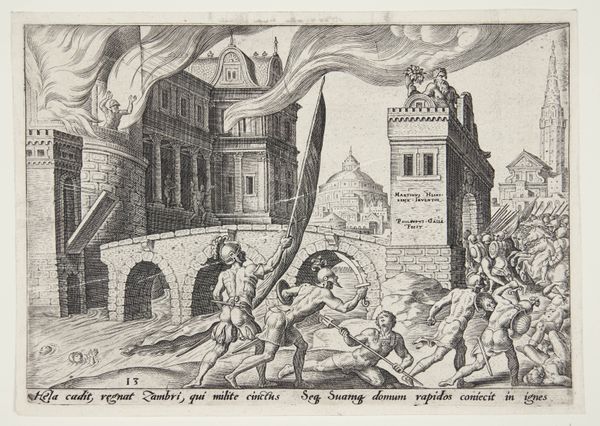
Destruction of the Tower of Babel: at right men and women flee from the burning tower, at left men and women raise their hands toward two flying angels, from "Liber Genesis" 1612
0:00
0:00
drawing, print, ink, engraving
#
drawing
#
narrative-art
# print
#
figuration
#
ink
#
history-painting
#
northern-renaissance
#
engraving
Dimensions: Sheet: 3 9/16 x 5 5/16 in. (9 x 13.5 cm) Plate: 3 1/4 x 4 3/4 in. (8.3 x 12.1 cm)
Copyright: Public Domain
Editor: Here we have Crispijn de Passe the Elder's engraving, "Destruction of the Tower of Babel," from 1612. The chaotic energy really jumps out. The Tower is being destroyed while people flee, seemingly in despair. What underlying stories do you see woven into the composition? Curator: Well, I immediately think about the dangers of centralized power and enforced conformity. The Tower of Babel, in this context, becomes a symbol of the oppressive state, where a singular language and worldview are imposed, crushing individual expression and cultural diversity. De Passe invites us to examine the socio-political ramifications of unchecked ambition. Notice how those who flee seem to have no concern for those consumed in flames. Do you see echoes of contemporary events? Editor: I see what you mean about centralized power. So the destruction could be interpreted as a form of liberation then? I'm curious about the groups raising their hands towards the angels though. Curator: Exactly! Liberation from enforced uniformity. Now, look closely at the raised hands. Are they gestures of supplication or perhaps, of defiance? Consider the engraving in light of religious conflict in 17th-century Europe. It certainly opens a door to considering these groups not as innocent bystanders but, potential resisters to a power system collapsing around them. The religious underpinnings can be read with layers of identity. Editor: That really reframes my understanding. I hadn't considered the perspective of defiance within a religious reading. Curator: These historical narratives frequently overlap in power, belief and the role of identity, shaping society and culture in lasting ways. Recognizing this work is only one thread in a bigger story can reveal new avenues of understanding and critical discourse for any historical text. Editor: Absolutely, it brings a totally different level of analysis to this work. Thank you.
Comments
No comments
Be the first to comment and join the conversation on the ultimate creative platform.

